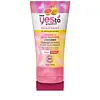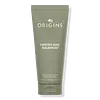What's inside
What's inside
 Key Ingredients
Key Ingredients

 Benefits
Benefits

 Concerns
Concerns

 Ingredients Side-by-side
Ingredients Side-by-side

Water
Skin ConditioningMyristic Acid
CleansingGlycerin
HumectantKaolin
AbrasivePotassium Hydroxide
BufferingPropanediol
SolventBehenic Acid
CleansingPalmitic Acid
EmollientStearic Acid
CleansingBentonite
AbsorbentButyrospermum Parkii Oil
EmollientCI 77891
Cosmetic ColorantParfum
MaskingCI 77492
Cosmetic ColorantDecyl Glucoside
CleansingMagnesium Aluminum Silicate
AbsorbentCitrus Grandis Seed Extract
AstringentMelia Azadirachta Leaf Extract
Skin ConditioningMelia Azadirachta Flower Extract
Skin ConditioningCoccinia Indica Fruit Extract
Skin ConditioningCorallina Officinalis Extract
Skin ConditioningAscorbic Acid
AntioxidantTocopherol
AntioxidantCellulose Gum
Emulsion StabilisingSodium Phytate
Xanthan Gum
EmulsifyingHydrogenated Lecithin
EmulsifyingZea Mays Starch
AbsorbentZein
Skin ConditioningSynthetic Fluorphlogopite
Silica Dimethyl Silylate
EmollientCaprylic/Capric Triglyceride
MaskingEthylhexylglycerin
Skin ConditioningBenzyl Benzoate
AntimicrobialLimonene
PerfumingWater, Myristic Acid, Glycerin, Kaolin, Potassium Hydroxide, Propanediol, Behenic Acid, Palmitic Acid, Stearic Acid, Bentonite, Butyrospermum Parkii Oil, CI 77891, Parfum, CI 77492, Decyl Glucoside, Magnesium Aluminum Silicate, Citrus Grandis Seed Extract, Melia Azadirachta Leaf Extract, Melia Azadirachta Flower Extract, Coccinia Indica Fruit Extract, Corallina Officinalis Extract, Ascorbic Acid, Tocopherol, Cellulose Gum, Sodium Phytate, Xanthan Gum, Hydrogenated Lecithin, Zea Mays Starch, Zein, Synthetic Fluorphlogopite, Silica Dimethyl Silylate, Caprylic/Capric Triglyceride, Ethylhexylglycerin, Benzyl Benzoate, Limonene
Water
Skin ConditioningSilica
AbrasiveCI 77220
Cosmetic ColorantGlycerin
HumectantStearic Acid
CleansingCetyl Esters
EmollientCetyl Alcohol
EmollientCaprylic/Capric Triglyceride
MaskingKaolin
AbrasivePotassium Stearate
CleansingGlyceryl Caprylate
EmollientDecyl Glucoside
CleansingMentha Viridis Leaf Oil
AstringentCitrus Aurantium Bergamia Fruit Oil
MaskingLavandula Hybrida Oil
EmollientPelargonium Graveolens Flower Oil
MaskingAnthemis Nobilis Flower Oil
MaskingStyrax Benzoin Gum
MaskingLimonene
PerfumingLinalool
PerfumingBambusa Arundinacea Stem Extract
Skin ConditioningTourmaline
Sodium Hyaluronate
HumectantLaminaria Saccharina Extract
Skin ProtectingGlycine Soja Oil
EmollientSucrose
HumectantCaprylyl Glycol
EmollientCaffeine
Skin ConditioningEthylhexylglycerin
Skin ConditioningButylene Glycol
HumectantTocopherol
AntioxidantXanthan Gum
EmulsifyingPEG-100 Stearate
Magnesium Aluminum Silicate
AbsorbentBentonite
AbsorbentSodium Phytate
Phenoxyethanol
PreservativeCI 77891
Cosmetic ColorantAquilaria Agallocha Wood Oil
MaskingWater, Silica, CI 77220, Glycerin, Stearic Acid, Cetyl Esters, Cetyl Alcohol, Caprylic/Capric Triglyceride, Kaolin, Potassium Stearate, Glyceryl Caprylate, Decyl Glucoside, Mentha Viridis Leaf Oil, Citrus Aurantium Bergamia Fruit Oil, Lavandula Hybrida Oil, Pelargonium Graveolens Flower Oil, Anthemis Nobilis Flower Oil, Styrax Benzoin Gum, Limonene, Linalool, Bambusa Arundinacea Stem Extract, Tourmaline, Sodium Hyaluronate, Laminaria Saccharina Extract, Glycine Soja Oil, Sucrose, Caprylyl Glycol, Caffeine, Ethylhexylglycerin, Butylene Glycol, Tocopherol, Xanthan Gum, PEG-100 Stearate, Magnesium Aluminum Silicate, Bentonite, Sodium Phytate, Phenoxyethanol, CI 77891, Aquilaria Agallocha Wood Oil
Ingredients Explained
These ingredients are found in both products.
Ingredients higher up in an ingredient list are typically present in a larger amount.
Bentonite is an aluminium phyllosilicate clay with great absorbent properties. The name 'bentonite' comes from the area where the largest source is found: Fort Benton, Wyoming.
As a clay, bentonite is often used to absorb excess oil and provide exfoliation. It has also been shown to have some antibacterial and anti-inflammatory properties. Studies show bentonite was effective at calming dermatitis from poison ivy and in diaper dermatitis of infants. Bentonite has also been shown to act as a barrier against toxic compounds on your skin.
Sunscreens containing bentonite display higher water resistance and stay on the skin for much longer. The sunscreens containing bentonite also show higher potency and UV light absorbtion.
Bentonite is naturally created from volcanic ash and several natural weathering/hydrothermal processes.
A common usage of bentonite is removing excess protein from white wines. Bentonite contains a property of being able to absorb large amounts of protein from aqueous solutions.
Phyllosilicate clay has a structure formed by sheets.
Learn more about BentoniteThis ingredient is an emollient, solvent, and texture enhancer. It is considered a skin-softener by helping the skin prevent moisture loss.
It helps thicken a product's formula and makes it easier to spread by dissolving clumping compounds.
Caprylic Triglyceride is made by combining glycerin with coconut oil, forming a clear liquid.
While there is an assumption Caprylic Triglyceride can clog pores due to it being derived from coconut oil, there is no research supporting this.
Learn more about Caprylic/Capric TriglycerideCi 77891 is a white pigment from Titanium dioxide. It is naturally found in minerals such as rutile and ilmenite.
It's main function is to add a white color to cosmetics. It can also be mixed with other colors to create different shades.
Ci 77891 is commonly found in sunscreens due to its ability to block UV rays.
Learn more about CI 77891Decyl Glucoside is a glucose-based surfactant and emulsion stabilizer. It is created by reacting glucose with the fatty acids from plants.
Surfactants help clean the skin by trapping oil, sebum, and dirt to be washed away. As an emulsion stabilizer, it stabilizes the ingredients in a product by preventing them from separating.
This ingredient is biodegradable and non-toxic. This ingredient is commonly found in baby shampoos.
Decyl Glucoside is sometimes used to stabilize the UV filter Tinosorb.
Learn more about Decyl GlucosideEthylhexylglycerin (we can't pronounce this either) is commonly used as a preservative and skin softener. It is derived from glyceryl.
You might see Ethylhexylglycerin often paired with other preservatives such as phenoxyethanol. Ethylhexylglycerin has been found to increase the effectiveness of these other preservatives.
Glycerin is already naturally found in your skin. It helps moisturize and protect your skin.
A study from 2016 found glycerin to be more effective as a humectant than AHAs and hyaluronic acid.
As a humectant, it helps the skin stay hydrated by pulling moisture to your skin. The low molecular weight of glycerin allows it to pull moisture into the deeper layers of your skin.
Hydrated skin improves your skin barrier; Your skin barrier helps protect against irritants and bacteria.
Glycerin has also been found to have antimicrobial and antiviral properties. Due to these properties, glycerin is often used in wound and burn treatments.
In cosmetics, glycerin is usually derived from plants such as soybean or palm. However, it can also be sourced from animals, such as tallow or animal fat.
This ingredient is organic, colorless, odorless, and non-toxic.
Glycerin is the name for this ingredient in American English. British English uses Glycerol/Glycerine.
Learn more about GlycerinKaolin is a clay. It is used for oil control and to help minimize pores. Like other clays, kaolin has the ability to absorb excess sebum or oil. This can help clean out pores and mattify the skin.
Some types of kaolin may have exfoliating properties. When water is added to kaolin, it becomes a paste with small abrasive particles.
Most kaolin is a white color, but may be pink/orange/red depending on where it comes from.
The name 'kaolin' comes from a Chinese village named 'Gaoling'. Kaolin clay comes from rocks rich in kaolinite. Kaolinite, the mineral, has a silicate layered structure. Kaolinite is formed from chemical weathering of aluminum siilicate minerals.
Besides skincare, kaolin is commonly used to make glossy paper, in ceramics, toothpaste, and as medicine to soothe stomach issues.
Learn more about KaolinLimonene is a fragrance that adds scent and taste to a formulation.
It's found in the peel oil of citrus fruits and other plants such as lavender and eucalyptus. The scent of limonene is generally described as "sweet citrus".
Limonene acts as an antioxidant, meaning it helps neutralize free radicals.
When exposed to air, oxidized limonene may sensitize the skin. Because of this, limonene is often avoided by people with sensitive skin.
The term 'fragrance' is not regulated in many countries. In many cases, it is up to the brand to define this term. For instance, many brands choose to label themselves as "fragrance-free" because they are not using synthetic fragrances. However, their products may still contain ingredients such as essential oils that are considered a fragrance.
Learn more about LimoneneMagnesium Aluminum Silicate is a type of silica. It comes from naturally occuring minerals such as silicate ores and clay.
Magnesium aluminum silicate is used for enhancing texture and as an absorbent. Due to its large molecular size, it is unable to be absorbed into the skin.
Like other types of silica, this ingredient can be used to thicken a product. As an absorbent, it may be used to absorb extra water or help prevent clumping.
Although “aluminum” in an ingredient name can raise red flags for some consumers, the form and usage context matter significantly. For typical topical applications, there is no substantial evidence of health risks - such as cancer, neurotoxicity, or systemic “aluminum overload.”
Learn more about Magnesium Aluminum SilicateSodium Phytate is the synthetic salt form of phytic acid. Phytic acid is an antioxidant and can be found in plant seeds.
Sodium Phytate is a chelating agent. Chelating agents help prevent metals from binding to water. This helps stabilize the ingredients and the product.
Stearic Acid is a fatty acid. It is an emollient, emulsifier, and texture enhancer.
As an emollient, stearic acid helps soften skin. It aids the skin's protective barrier by preventing water loss. It also provides a gentle cleansing effect without stripping away natural oils.
Stearic acid may also be used to enhance the texture of products. It can add volume and stabilize ingredients such as water and oil. This can help water and oil ingredients from separating.
Sources of stearic acid include animal or vegetable fats/oils such as coconut or shea. It can be naturally found in butter, cocoa butter, shea butter, vegetable fats, and animal tallow.
This ingredient may not be Malassezia folliculitis, or fungal-acne safe.
Learn more about Stearic AcidTocopherol (also known as Vitamin E) is a common antioxidant used to help protect the skin from free-radicals and strengthen the skin barrier. It's also fat soluble - this means our skin is great at absorbing it.
Vitamin E also helps keep your natural skin lipids healthy. Your lipid skin barrier naturally consists of lipids, ceramides, and fatty acids. Vitamin E offers extra protection for your skin’s lipid barrier, keeping your skin healthy and nourished.
Another benefit is a bit of UV protection. Vitamin E helps reduce the damage caused by UVB rays. (It should not replace your sunscreen). Combining it with Vitamin C can decrease sunburned cells and hyperpigmentation after UV exposure.
You might have noticed Vitamin E + C often paired together. This is because it is great at stabilizing Vitamin C. Using the two together helps increase the effectiveness of both ingredients.
There are often claims that Vitamin E can reduce/prevent scarring, but these claims haven't been confirmed by scientific research.
Learn more about TocopherolWater. It's the most common cosmetic ingredient of all. You'll usually see it at the top of ingredient lists, meaning that it makes up the largest part of the product.
So why is it so popular? Water most often acts as a solvent - this means that it helps dissolve other ingredients into the formulation.
You'll also recognize water as that liquid we all need to stay alive. If you see this, drink a glass of water. Stay hydrated!
Learn more about WaterXanthan gum is used as a stabilizer and thickener within cosmetic products. It helps give products a sticky, thick feeling - preventing them from being too runny.
On the technical side of things, xanthan gum is a polysaccharide - a combination consisting of multiple sugar molecules bonded together.
Xanthan gum is a pretty common and great ingredient. It is a natural, non-toxic, non-irritating ingredient that is also commonly used in food products.
Learn more about Xanthan Gum